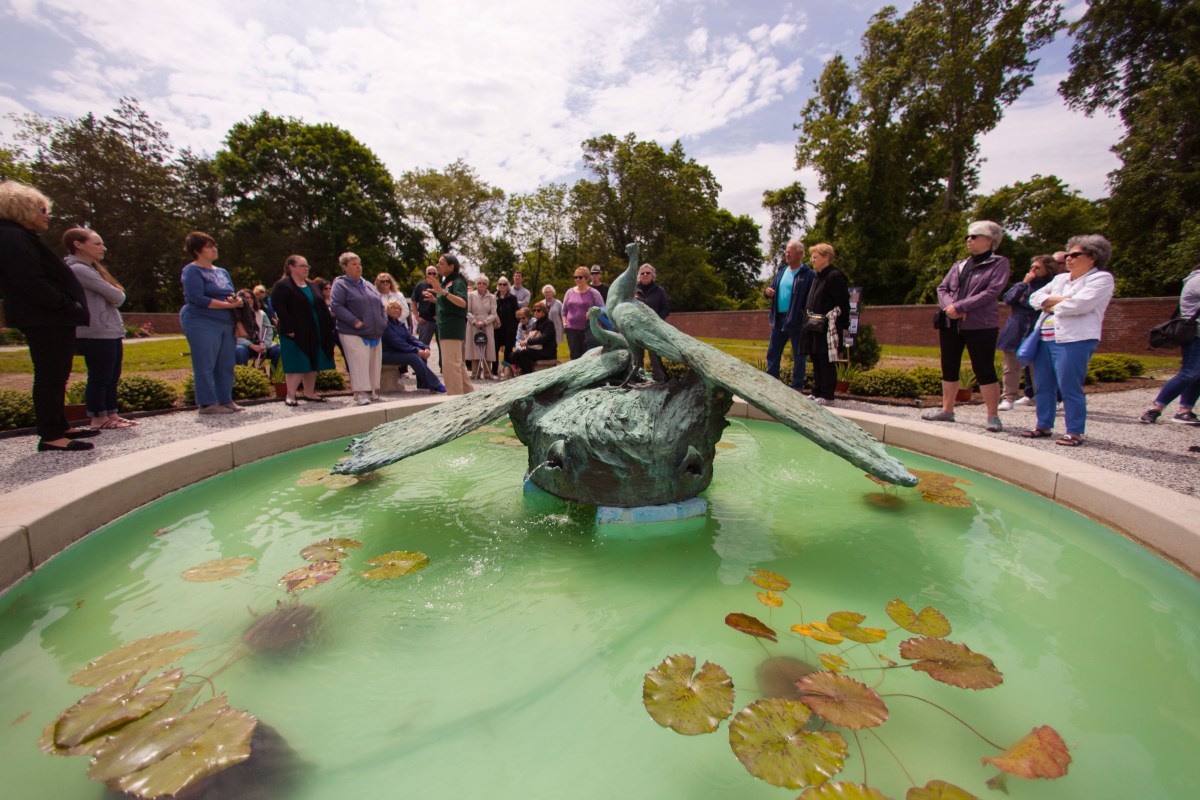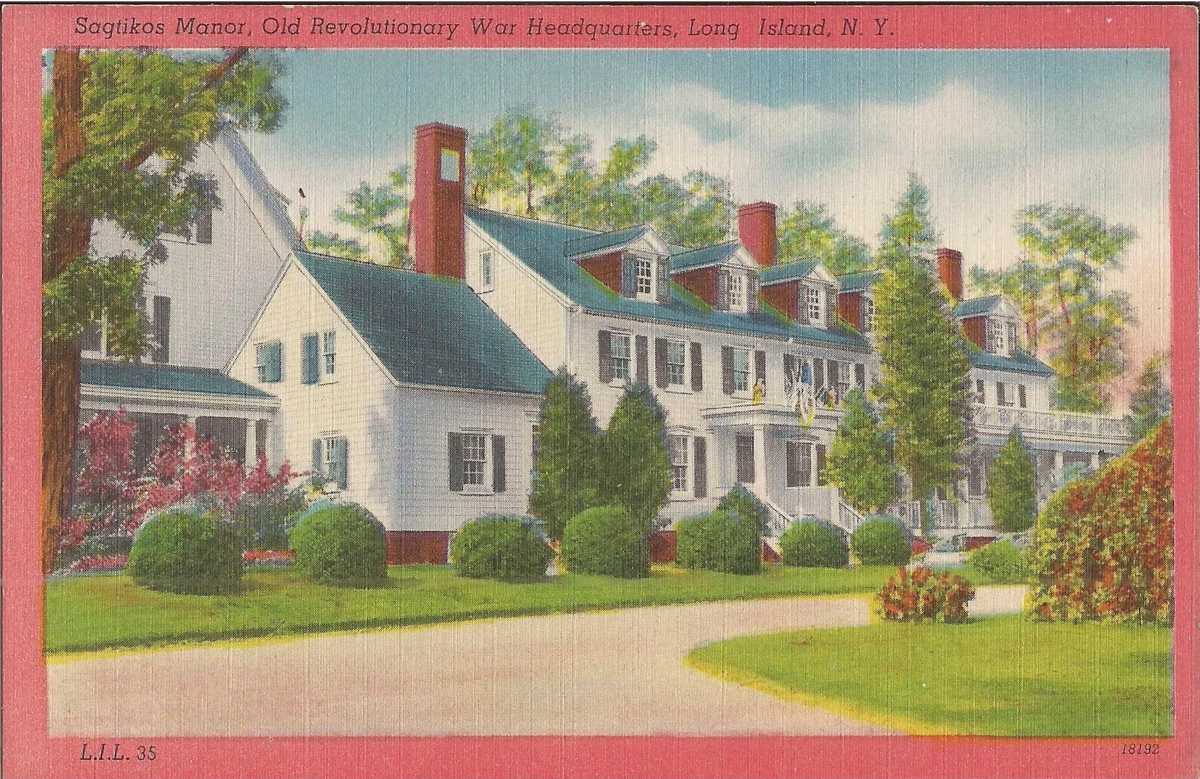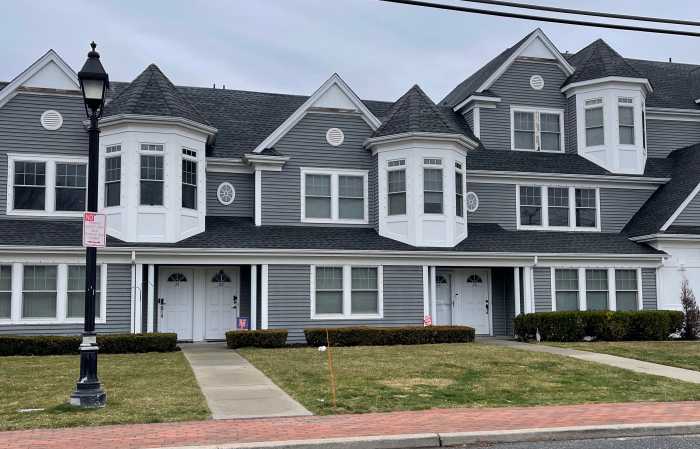Sagtikos Manor is cozily nestled right next to Montauk Highway, and is one of the oldest buildings in Suffolk County. Many Islip Town residents will recall a memory with the 332-year-old estate, whether that’s going on a tour inside the former residence, attending the various events hosted on the house’s grounds, or writing a school report on George Washington staying the night at the manor in the spring of 1790.
The first President’s visit to the home is far from the apex of the manor’s history.
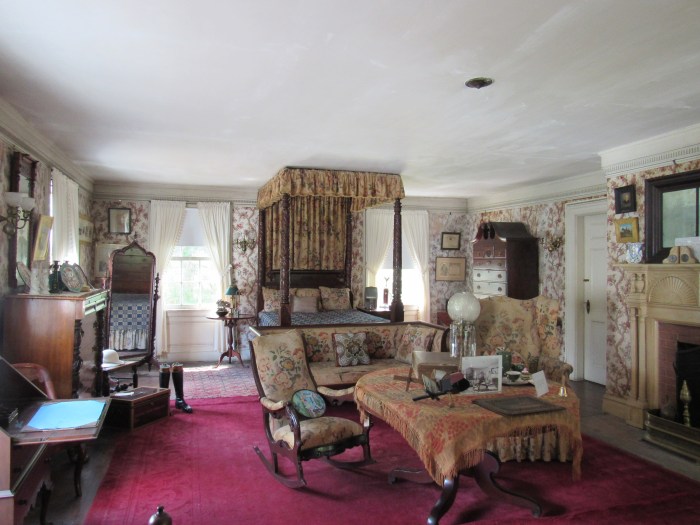
“Because we’re over 300 years old, we tend to focus on the Revolutionary War,” said Phyllis Chan-Carr, Sagtikos Manor’s Marketing and Public Relations Director. “But there’s also a lot of history about the Thompson family, who owned the manor for over 200 years.”
Originally built on land purchased from the Secatogue tribe in 1692, Sagtikos Manor is an eclectic patchwork of luxurious, old-money living, having received several additions and renovations since its groundbreaking. Initially owned by Stephanus Van Cortlandt, the first American-born mayor of New York City, Sagtikos Manor started its life as a four-room loft on a massive 1200-acre property, which stretched from the Great South Bay to Brentwood, foreshadowing the gigantic Gold Coast estates that would make Jay Gatsby jealous.
After being purchased by Timothy Caroll six years after Cortlandt died in 1706, the manor was sold off to Jonathan Thompson, who entrusted the estate to his fifteen-year-old son, Isaac. The manor would then get several additions when it was Thompson family ownership, with the most notable expansions being supervised by Frederick Diodoti Thompson, who bought out his families’ shares in the home and constructed the manor’s eastern and western wings in the early 1900s.
It was then inherited by Robert Gardnier in 1935, the last heir to Gardnier’s Island. Gardiner initially used the property as his primary residence for about 30 years, eventually allowing the Sagtikos Manor Historical Society to organize the first public tours of his home in 1963. The manor was sold to Suffolk County in 2002, who renovated the entire house.
“The county had to do a lot of renovations when they bought the place, including the plumbing,” joked Chan-Carr. “A lot of the utilities here were from the 1900s.”
While the county owns the property and pays the bills, the Sagtikos Manor Historical Society, which includes Chan-Carr and seven other trustees and a Board of Directors, is entrusted with its actual maintenance and operation.
With a dedicated team of volunteers, the Society organizes tours of the manor and events on the property, such as the locally beloved antique and classic car shows.
“We also decided to start having a yearly event celebrating George Washington’s birthday,” Chan-Carr added. “We used a lot of the paintings we have in the house to tell his story.”
One of the Society’s most substantial jobs is to preserve and analyze the history of the manor and the countless artifacts inside it.
When sold to Suffolk County over 20 years ago, Sagtikos Manor contained hundreds, if not thousands, of artifacts, which had as much variety as the four walls that housed them. The Historical Society managed to find everything from letters written by former Speaker of the House Henry Clay to moccasins belonging to an unknown child and the personal belongings of members of the Thompson family, to even a painting of the 1775 burning of Charlestown, which was found in the back of another painting’s frame. The former servant’s quarters have even been repurposed as the Society’s archives, which consist of thousands of unique records and documents.
Despite the wide range of artifacts, the Manor’s Historical Society wants to keep the manor looking period-correct. “We use a lot of photos from the 1800s as a reference,” Chan-Carr said. “There’s a lot of things in here from different periods, and we want to keep it all as
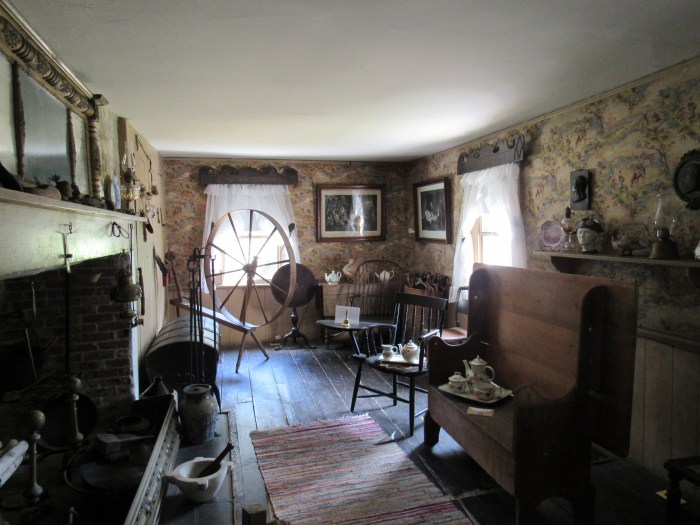
authentic as possible.”
While Sagtikos Manor is in great shape for being three centuries old, the Historical Society must carefully balance renovation with historical purity. For instance, many of the original cabinets that hold the manor’s fine china are hard to see, so the Society elected to install LED lights in them. Some of the wallpaper in the house is also starting to peel in small sections, and finding a one-to-one replacement for it isn’t as cut and dry as going to Lowe’s.
“We want to keep the manor in the best shape as we can, but it can be a bit difficult given its age,” said Chan-Carr. “We have to pinpoint what needs conserving the most, though we want to conserve everything in the house.”
While maintaining such an old property has unique challenges, the Historical Society feels optimistic about the manor’s future.
“We do small tours during the antique and car shows, and people are enthusiastic,” said Chan-Carr. “Many people also come to our fall festival and Christmas events. It’s a labor of love and work, but we wouldn’t be here if we didn’t love it.”
